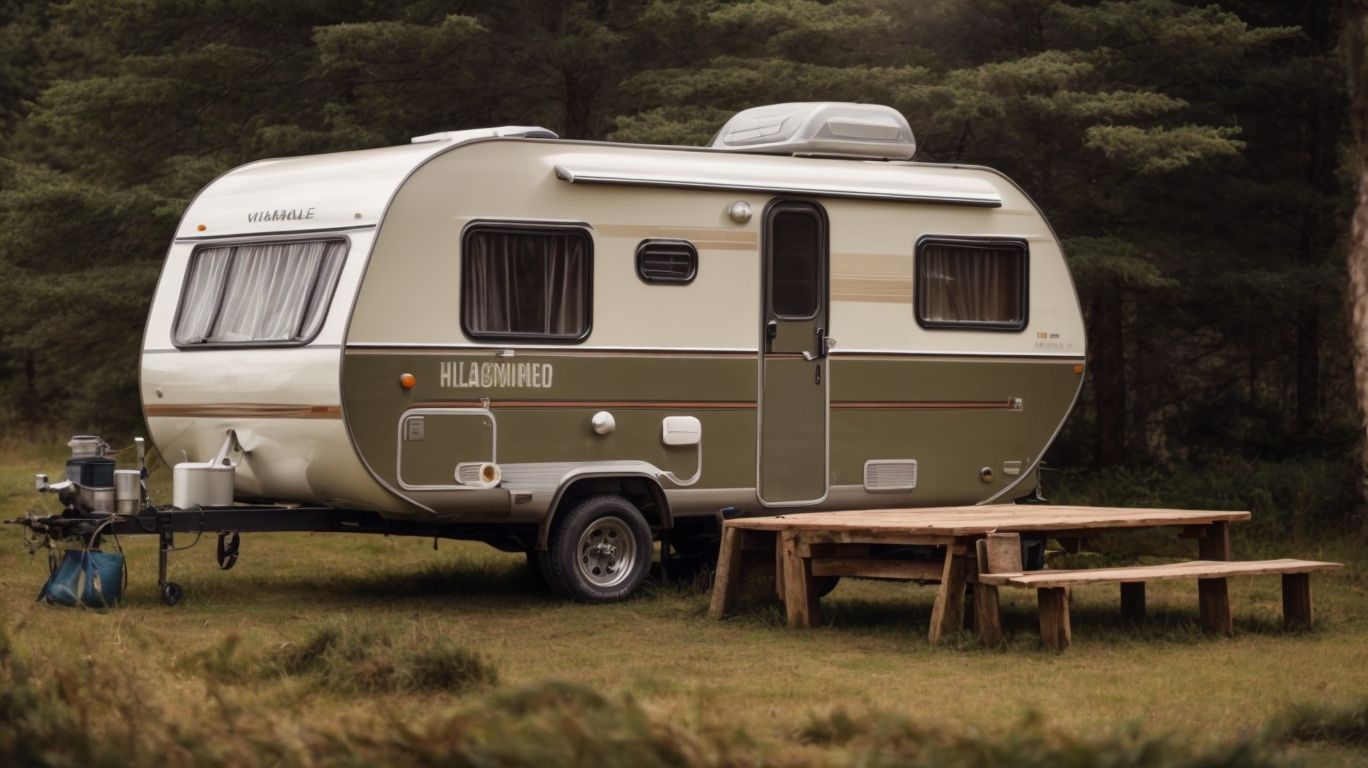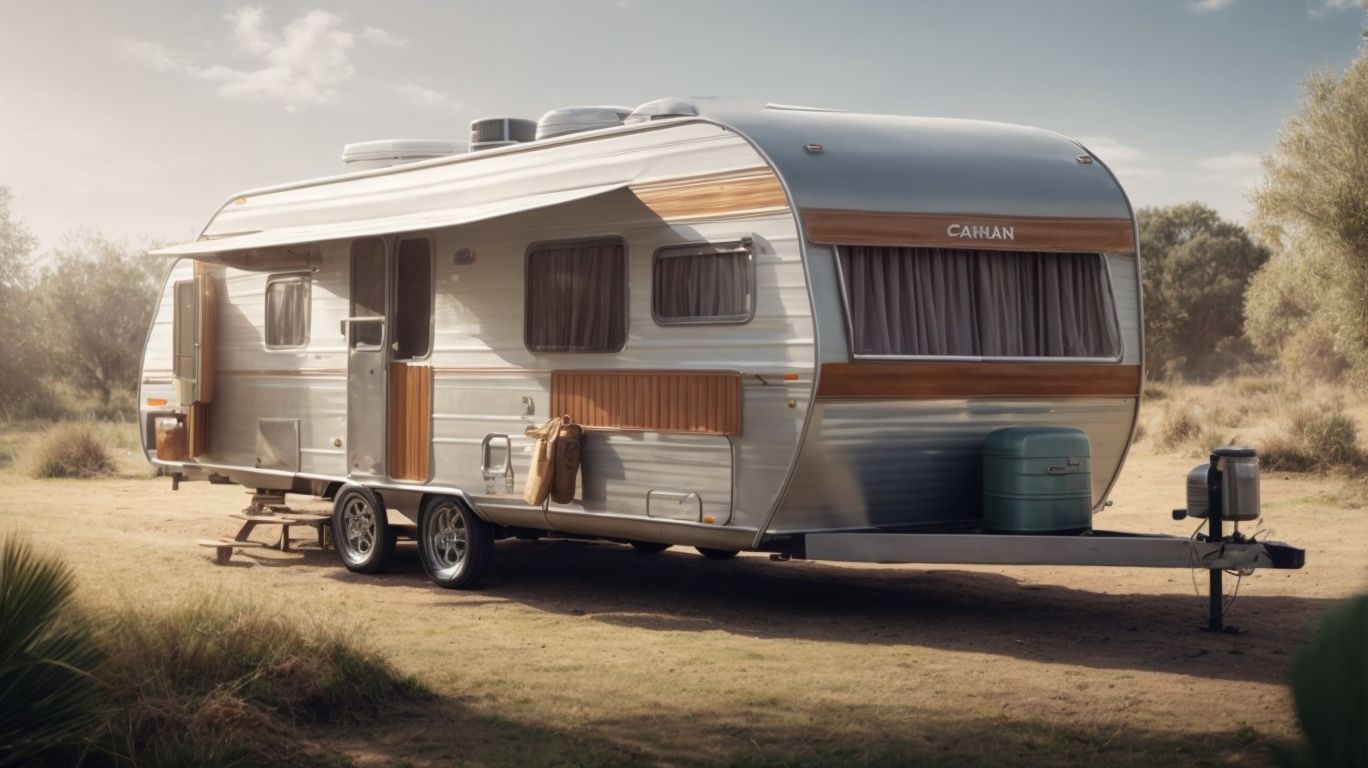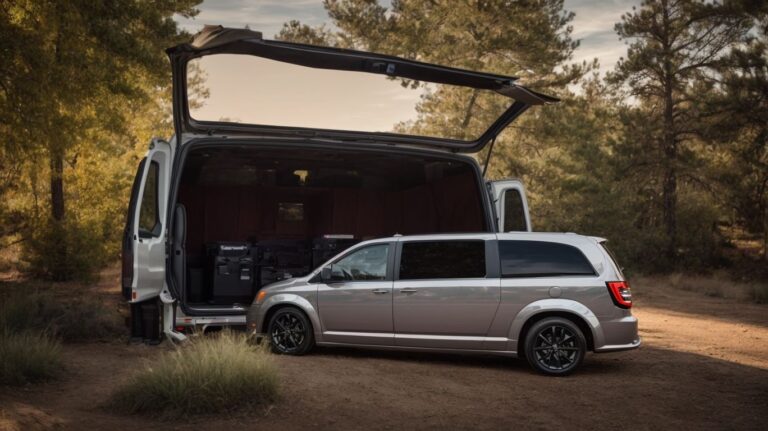Understanding the Weight Specifications of Caravans
Are you planning a caravan trip but unsure about the weight specifications of your vehicle?
This article covers everything you need to know about the maximum allowable weight for a caravan, the difference between unladen weight and maximum allowable weight, and how to calculate the weight of your caravan.
We also discuss the consequences of exceeding weight specifications, tips for managing caravan weight, and the importance of understanding these specifications for safe and enjoyable travels.
Let’s dive in!
Key Takeaways:
What is the Maximum Allowable Weight for a Caravan?

Credits: Motorcaravanning.Com – Russell Scott
Understanding the maximum allowable weight for a caravan is crucial for safe and legal towing practices. Caravan weight limits are set by manufacturers and are specified as the Gross Trailer Mass (GTM) and Aggregate Trailer Mass (ATM). These specifications dictate the maximum weight a caravan can safely carry and be towed by a vehicle.
GTM refers to the total weight of the loaded caravan placed on the axle set. This includes the caravan’s own weight and the weight of all items loaded into it. On the other hand, ATM is the total weight the caravan can carry, including its own weight. Adhering to these weight limits is essential for maintaining road safety, avoiding accidents, and ensuring compliance with legal regulations.
One crucial aspect of caravan weight management is the payload, which refers to the additional weight that can be safely added to the caravan, including personal belongings, water, and other supplies. It is important to distribute this weight evenly and within the specified limits to maintain stability and safe towing conditions.
What is the Difference Between Unladen Weight and Maximum Allowable Weight?
The difference between unladen weight and maximum allowable weight of a caravan lies in their definitions and implications for towing. Unladen weight refers to the empty weight of the caravan without any cargo or passengers, while the maximum allowable weight represents the total weight limit set by manufacturers for safe towing.
This distinction is crucial as exceeding the maximum allowable weight can lead to safety hazards, decreased maneuverability, and increased wear and tear on the vehicle. For example, if a caravan’s unladen weight is 2,000 pounds and the maximum allowable weight is 3,000 pounds, the difference of 1,000 pounds represents the cargo and passengers it can safely carry while towing.
Why is it Important to Know the Weight Specifications of a Caravan?
Understanding the weight specifications of a caravan is essential to ensure safe towing practices and compliance with regulations. Knowledge of caravan weight limits enables drivers to maintain stability, balance, and proper weight distribution while on the road.
Exceeding the caravan weight limits increases the risk of accidents due to potential loss of control, braking issues, and strain on the towing vehicle. Weight regulations are put in place to protect not only the driver and passengers but also other road users. By adhering to these limits, drivers contribute to overall road safety and reduce the likelihood of collisions caused by overloaded vehicles.
How to Calculate the Weight of a Caravan?
Calculating the weight of a caravan involves considering various factors such as Tare Mass, Gross Vehicle Mass (GVM), Gross Trailer Mass (GTM), and Aggregate Trailer Mass (ATM). These values are crucial for determining the total weight a caravan can carry and the appropriate towing vehicle needed.
Before diving into the calculations, it’s essential to understand the significance of each term. The Tare Mass refers to the weight of the caravan when it’s empty, including essential fluids like fuel and oil but without any additional load. On the other hand, GVM represents the maximum total weight the caravan can hold when fully loaded. Additionally, GTM is the weight that the trailer imposes on the tow vehicle when fully loaded.
Moreover, ATM is the total weight placed on the caravan wheels and the wheels of the towing vehicle when the caravan is fully loaded. Understanding these values is crucial for safe towing and compliance with legal requirements.
What is the Tare Weight of a Caravan?
The Tare Weight of a caravan refers to its empty weight without any cargo, accessories, or additional items. This baseline weight is essential for calculating the total payload capacity of the caravan and ensuring safe towing practices.
Tare Weight serves as the starting point for loading a caravan, dictating how much additional weight it can safely carry. By understanding the concept of Tare Weight, caravan owners can make informed decisions about what items to pack, ensuring they do not exceed the recommended payload limits.
When considering Tare Mass, it is crucial to account for items such as water tanks, gas cylinders, spare tires, and onboard equipment that contribute to the overall weight of the caravan. Exceeding the specified Tare Weight can not only affect the caravan’s stability but also impact the vehicle’s performance and safety while towing.
What is the Gross Vehicle Mass (GVM) of a Caravan?
The Gross Vehicle Mass (GVM) of a caravan refers to the maximum weight that the caravan can safely carry, including its own weight and the payload. This value accounts for the total capacity of the caravan’s axles and ensures compliance with weight regulations.
GVM plays a crucial role in weight management as it dictates how much load the caravan can handle without exceeding safe limits. By understanding and adhering to the GVM limits, caravan owners can ensure the safety of their vehicles on the road. GVM directly impacts the towing capacity of the caravan, influencing its ability to tow other vehicles or trailers efficiently.
Proper distribution of weight across the axles is essential for maintaining stability during travel. Exceeding the recommended GVM can lead to overloading, affecting steering control and braking performance. Different caravan models come with varying GVM limits to accommodate diverse sizes and designs.
- For example, a compact caravan might have a GVM limit of around 1500 kg, while larger models could reach 2500 kg or more.
It is paramount for caravan owners to adhere to the specified GVM to prevent structural damage, maintain road safety, and ensure a comfortable towing experience.
What is the Gross Combination Mass (GCM) of a Caravan?
The Gross Combination Mass (GCM) of a caravan represents the total weight limit of the caravan and its towing vehicle combined. Understanding GCM is crucial for maintaining balance, weight distribution, and stability while towing a caravan.
Properly managing GCM is essential to ensure the towing setup operates safely and efficiently. Exceeding the GCM can lead to dangerous situations, such as reduced braking ability and increased risks of swaying or jackknifing.
One way to manage GCM effectively is to regularly check the weight distribution between the caravan and the towing vehicle. This can be done using scales to measure axle loads and adjusting the load placement accordingly.
- Regulations regarding GCM vary across different regions, with some countries having strict limits on the permitted GCM for towing vehicles.
- Paying attention to GCM regulations and ensuring compliance is not only a legal requirement but also crucial for the safety of yourself and other road users.
What are the Consequences of Exceeding Weight Specifications?

Credits: Motorcaravanning.Com – Jordan Brown
Exceeding weight specifications for a caravan can lead to detrimental consequences such as compromised safety, reduced vehicle performance, and potential legal penalties. Overloading a caravan poses risks to both the driver and other road users.
One of the key safety hazards associated with overloading a caravan is the increased likelihood of instability and loss of control while driving. When a caravan exceeds its weight capacity, it puts significant strain on the vehicle’s suspension, brakes, and tires, leading to potential mechanical failures and accidents.
Operating a caravan above the recommended weight limit can result in breaching legal regulations, inviting fines, license points, and even vehicle confiscation. Authorities enforce weight limits to ensure road safety and proper vehicle performance.
Real-life examples of incidents caused by exceeding weight specifications include instances of trailers swaying uncontrollably, jackknifing, or even detachment from the towing vehicle, all of which can result in serious accidents and injuries.
How Does Overloading Affect Towing and Driving?
Overloading a caravan can significantly impact towing and driving experiences by compromising stability, balance, and overall vehicle control. The excess weight can strain the towing vehicle’s engine, brakes, and suspension systems.
When a caravan is overloaded, it can lead to potential dangers on the road. The added weight puts extra stress on the vehicle’s tires, making them more prone to blowouts. Steering becomes more challenging, requiring increased effort and reducing responsiveness. This can be especially risky during sudden maneuvers or in emergency situations.
- Ensuring that your caravan weight remains within the recommended limits is crucial for safe towing.
Apart from adhering to weight restrictions, regular maintenance of the towing vehicle, such as checking tire pressures, ensuring brake responsiveness, and optimizing suspension performance, is essential to mitigate risks associated with overloading.
What Penalties Can Be Imposed for Exceeding Weight Specifications?
Exceeding weight specifications for a caravan can result in various penalties as per towing regulations and laws. These penalties may include fines, demerit points on the driver’s license, or even vehicle impoundment in severe cases of non-compliance.
When a caravan exceeds its weight limit, it endangers not just the driver but also other road users. In the eyes of the law, this is a serious violation that can lead to hefty fines, loss of driving privileges, and legal ramifications. Exceeding weight restrictions can put immense strain on the towing vehicle, jeopardizing its stability and control.
Adhering to towing laws isn’t merely a matter of following rules; it’s about ensuring safety on the road for everyone. By understanding and respecting weight limits, drivers can prevent accidents and maintain legal compliance, ultimately making their journeys more secure and hassle-free.
Tips for Managing Caravan Weight

Credits: Motorcaravanning.Com – William Thompson
Effective management of caravan weight is essential for safe and efficient towing experiences.
Packing lighter for a caravan trip not only benefits vehicle performance but also ensures better fuel efficiency. To reduce weight without compromising necessities, consider multipurpose items and avoid duplicates. Opt for lightweight camping gear, clothing, and cookware, and keep an eye on unnecessary items that can add unnecessary bulk. Organizing gear efficiently, using storage containers, and utilizing roof racks can free up interior space and distribute weight evenly.
How to Pack Lighter for a Caravan Trip?
Packing lighter for a caravan trip involves prioritizing essential items, minimizing cargo weight, and distributing loads evenly. By packing strategically and efficiently, drivers can reduce overall weight and enhance towing safety and performance.
When preparing for your caravan adventure, consider the multi-purpose items that can serve more than one function to limit the number of individual pieces. Opt for light and compact versions of camping gear such as collapsible cookware or versatile clothing that can be layered for varying weather conditions. Creating a detailed checklist can help you stay organized and avoid overpacking.
To reduce excess weight, assess each item’s necessity and usability during the trip. Avoid duplicates or items with limited utility. Keeping in mind the payload capacity of your caravan, aim to distribute weight evenly across the available storage spaces. Utilize storage bins, compartments, and overhead spaces efficiently to balance the load and prevent swaying or instability.
What are the Alternatives to Reduce Weight in a Caravan?
Exploring alternatives to reduce weight in a caravan can involve utilizing lightweight materials, minimizing accessories, and optimizing cargo selection. By making conscious choices to streamline weight, drivers can enhance towing efficiency and compliance with weight regulations.
One effective way to reduce the overall weight of a caravan is to invest in lightweight materials such as aluminum or carbon fiber for construction. These materials offer strength while being significantly lighter than traditional options, thereby decreasing the overall load. Carefully selecting portable camping equipment, compact furniture, and space-saving appliances can further cut down on excess weight without compromising on comfort.
Regarding cargo, it’s essential to prioritize necessities and avoid overpacking. Minimizing provisions, clothing, and non-essential items can make a significant difference in reducing the load. Consider opting for multi-functional items that serve dual purposes to optimize space utilization and weight management.
Conclusion: Understanding the Weight Specifications of Caravans for Safe and Enjoyable Travels
A thorough understanding of the weight specifications of caravans is paramount for ensuring safe and enjoyable travels. By adhering to weight regulations, maintaining compliance with laws, and prioritizing safety, caravan enthusiasts can embark on memorable journeys with peace of mind.
One of the critical aspects of comprehending caravan weight specifications is the impact they have on the overall towing experience. Exceeding the recommended weight limits can lead to instability, reduced control, and increased braking distances, significantly compromising safety on the road.
Laws governing caravan weights are in place not to restrict but to safeguard travelers and other road users. They provide a framework for managing the weight distribution within safe limits and are essential for preventing accidents caused by overloading.
Adhering to weight regulations is not just a matter of legal compliance; it directly correlates with the protection of your vehicle, the safety of your passengers, and the well-being of those sharing the road with you. It ensures smoother handling, optimal performance, and a reduced risk of mechanical failures.
By embracing responsible caravan travel practices, individuals contribute to a culture of safety and respect on the roads. Prioritizing weight management isn’t just a recommendation; it’s a commitment to the well-being of everyone who enjoys the freedom of caravan adventures.
Frequently Asked Questions
What are weight specifications and why are they important for caravans?
Weight specifications refer to the maximum weight that a caravan can safely carry, including the weight of the caravan itself, its contents, and any additional weight from accessories or modifications. These specifications are important because exceeding the weight limit can lead to safety hazards, damage to the vehicle and road, and even legal consequences.
What are the different weight specifications for caravans?
There are typically three weight specifications for caravans: the unladen weight, the maximum allowable weight, and the maximum towing weight. The unladen weight is the weight of the empty caravan, while the maximum allowable weight is the total weight of the caravan, including passengers and their belongings. The maximum towing weight is the maximum weight that can be safely towed by the vehicle.
How do I determine the weight specifications of a caravan?
The weight specifications of a caravan can usually be found in its documentation, such as the owner’s manual or the vehicle registration certificate. You can also find this information on the manufacturer’s website or by contacting the dealership. It’s important to note that different models of the same caravan may have different weight specifications.
What are the consequences of exceeding the weight specifications of a caravan?
Exceeding the weight specifications of a caravan can lead to several consequences. It can cause damage to the vehicle’s suspension, tires, and brakes, making it unsafe to drive. It can also put a strain on the engine, leading to reduced fuel efficiency and potential breakdowns. Additionally, exceeding weight limits may result in fines and legal consequences.
Can I increase the weight specifications of a caravan?
It is not recommended to increase the weight specifications of a caravan beyond what is specified by the manufacturer. Doing so can compromise the safety and performance of the vehicle. If you need to carry more weight, consider upgrading to a larger and more capable caravan or removing unnecessary items to reduce the weight.
What are some ways to stay within the weight specifications of a caravan?
To ensure that you stay within the weight specifications of a caravan, it’s essential to carefully pack and distribute the weight evenly. Avoid overloading the vehicle with heavy items and instead distribute them throughout the caravan. It’s also a good idea to regularly weigh your caravan to ensure it remains within the specified limits.







